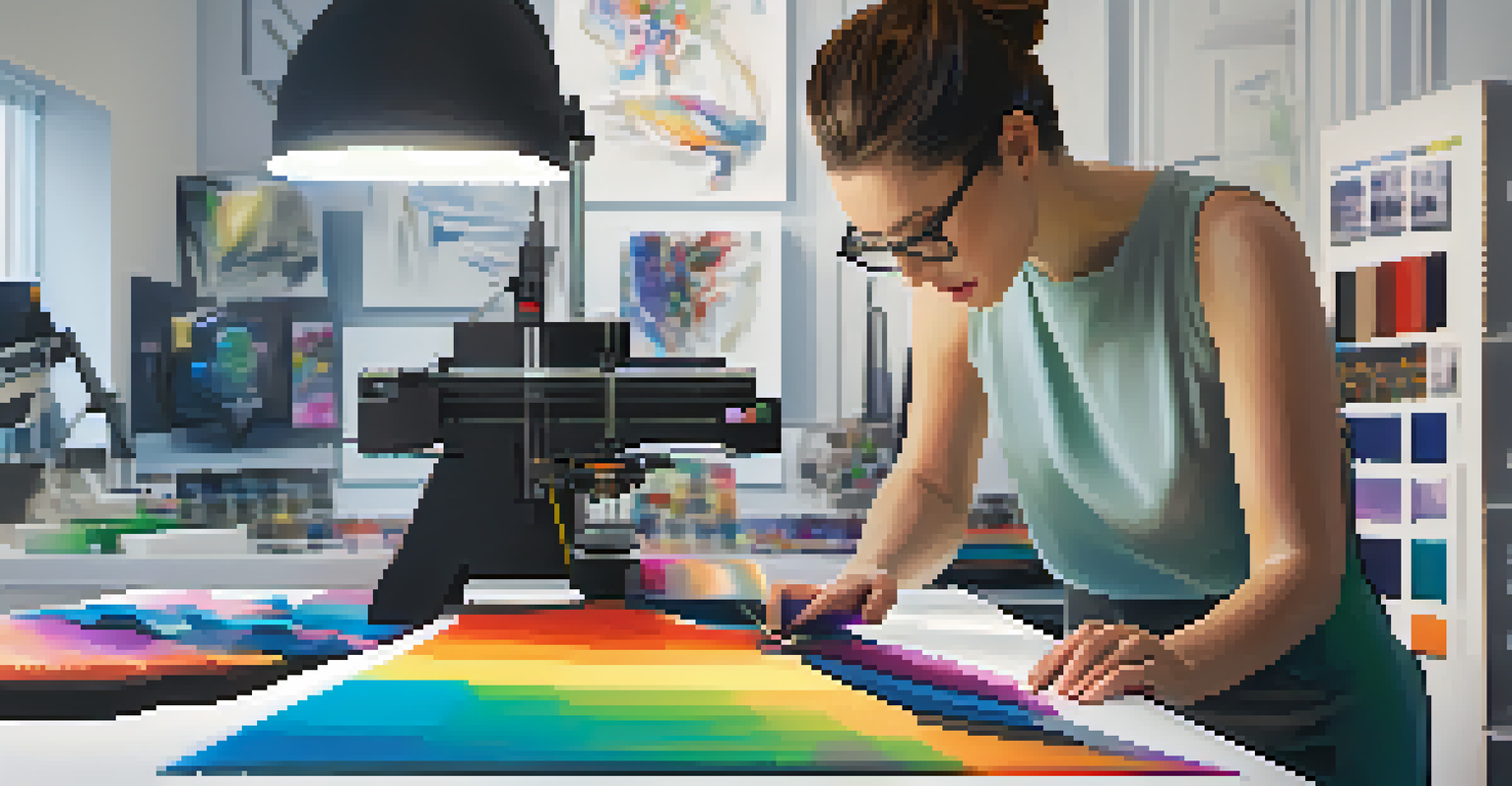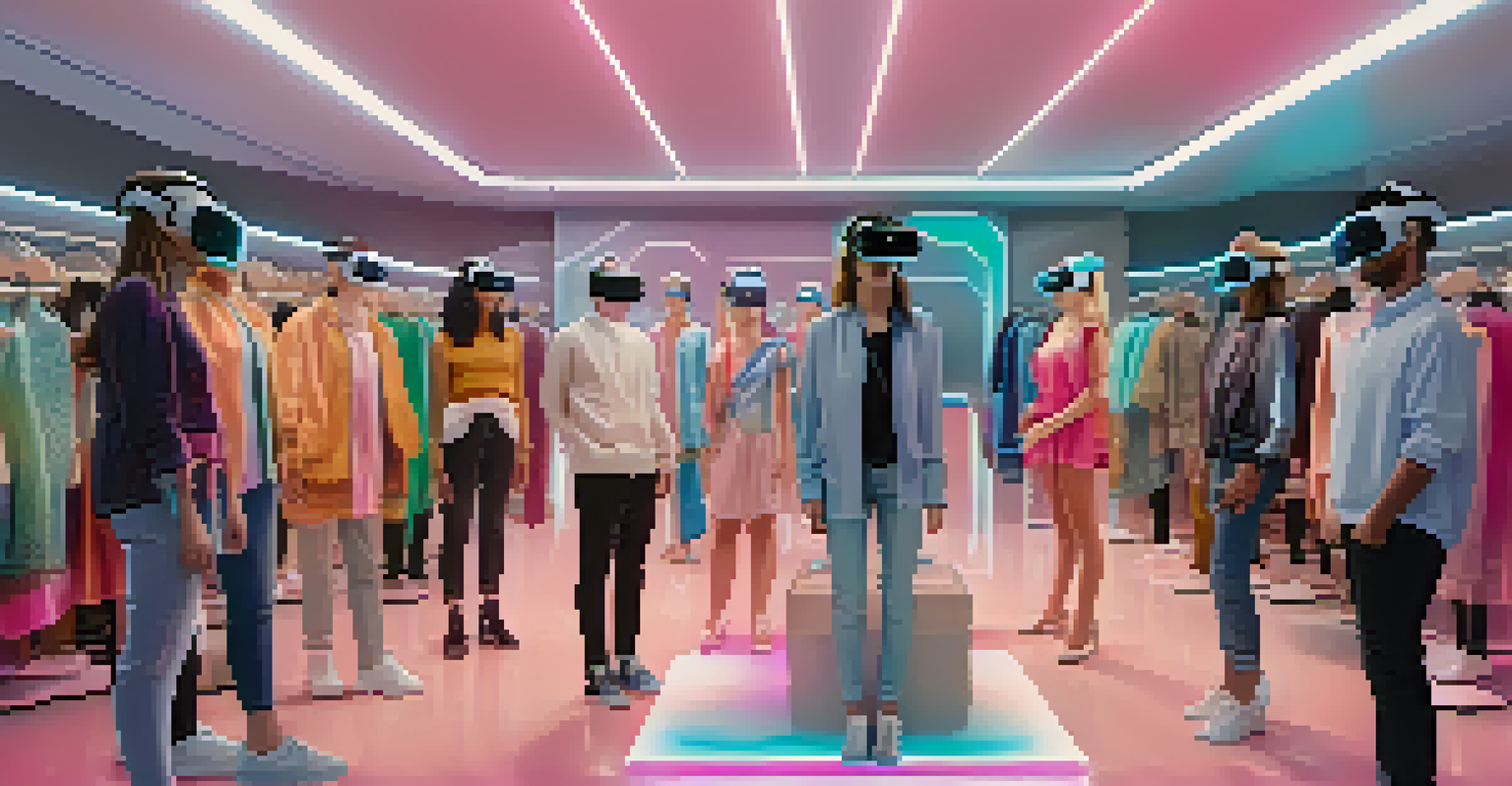Fashion and Technology: Innovations Driving Market Changes

The Rise of Smart Fabrics in Fashion Design
Smart fabrics are revolutionizing the way we think about clothing. These textiles can adapt to various conditions, providing features like moisture-wicking, temperature control, and even built-in sensors. For instance, imagine a shirt that not only looks good but also keeps you cool on a hot day or alerts you when you're dehydrated.
Fashion is the armor to survive the reality of everyday life.
This innovation is more than just a trend; it’s a response to consumer demands for multifunctionality in their wardrobes. Brands are increasingly investing in research and development to create fabrics that enhance performance while maintaining style. As a result, we are starting to see a blend of fashion and function that was once thought impossible.
Moreover, smart fabrics can significantly impact sustainability. By creating garments that last longer and perform better, the fashion industry can reduce waste and promote eco-friendly practices. This aligns with the growing consumer preference for sustainable fashion, making smart fabrics a win-win for both style enthusiasts and environmentally-conscious shoppers.
3D Printing: Customization and Sustainability Unite
3D printing is changing the game in fashion by offering unprecedented customization options. Instead of mass-produced items, brands can now create on-demand pieces tailored to individual preferences. This not only meets the growing desire for unique items but also minimizes overproduction, a significant issue in traditional fashion manufacturing.

A notable example is the collaboration between established brands and 3D printing companies, creating collections that are not only stylish but also sustainable. For instance, designers can use biodegradable materials to print shoes, reducing the carbon footprint associated with conventional footwear production. This innovative approach showcases how technology can seamlessly blend with eco-conscious practices.
Smart Fabrics Enhance Fashion Functionality
Smart fabrics combine style and performance, adapting to conditions while promoting sustainability.
Furthermore, the convenience of 3D printing allows for rapid prototyping, enabling designers to experiment and iterate quickly. This agility can lead to more creative and diverse collections, appealing to a wider audience. As consumers become more aware of what goes into their clothing, 3D printing presents a compelling solution to both customization and sustainable fashion.
Virtual Reality: Transforming the Shopping Experience
Virtual reality (VR) is reshaping how we shop for fashion, providing immersive experiences that traditional retail cannot match. With VR, customers can 'try on' clothes in a virtual environment, helping them visualize how garments will look without the hassle of changing rooms. This not only enhances the shopping experience but also reduces the likelihood of returns, a persistent problem in e-commerce.
Technology is best when it brings people together.
Brands like Gucci and Dior have already begun to implement VR showrooms, allowing customers to explore new collections from the comfort of their homes. This innovation caters to the tech-savvy shopper who values convenience and novelty. It’s as if you’re stepping into a high-end boutique without ever leaving your living room.
Moreover, VR can be a powerful marketing tool, creating memorable experiences that engage consumers on a deeper level. By making fashion accessible and fun, brands can foster loyalty and build stronger connections with their audience. As the technology continues to evolve, we can expect even more exciting developments in the world of virtual shopping.
Augmented Reality: Enhancing Fashion Retail
Augmented reality (AR) is another technological advancement that’s making waves in the fashion industry. Unlike VR, which creates entirely new environments, AR overlays digital information onto the real world. This means shoppers can use their smartphones or AR glasses to see how clothing looks on them without physically trying it on.
Retailers like Zara and ASOS have embraced AR technology, offering apps that let customers visualize outfits in real-time. This interactive experience not only makes shopping more engaging but also helps customers make informed decisions, reducing buyer’s remorse. Imagine scrolling through a catalog and instantly seeing how a dress fits you—it's a game changer.
3D Printing Offers Unique Customization
3D printing allows for on-demand, personalized fashion items, reducing overproduction and environmental impact.
AR also opens up new avenues for marketing and customer interaction. Brands can create unique experiences that encourage social sharing, enhancing visibility and engagement. As AR technology becomes more integrated into retail strategies, we can expect a shift in how consumers interact with fashion brands, making shopping more personalized and fun.
Artificial Intelligence: Personalized Recommendations in Fashion
Artificial intelligence (AI) is revolutionizing the fashion industry by providing personalized shopping experiences. AI algorithms analyze consumer behavior, preferences, and trends to recommend items tailored to individual tastes. This means that when you log into your favorite fashion app, the suggested outfits are more likely to resonate with your style.
Brands are leveraging AI not just for recommendations but also for inventory management and trend forecasting. By predicting what styles will be popular, companies can optimize their collections and minimize unsold stock. This smart approach not only enhances efficiency but also aligns with consumer demands for timely and relevant fashion.
Additionally, AI-driven chatbots are improving customer service, answering queries, and providing styling advice in real-time. This level of personalization creates a more enjoyable shopping experience, fostering brand loyalty. As AI continues to advance, its role in fashion will only grow, making it an indispensable tool for both consumers and retailers.
Blockchain Technology: Enhancing Transparency in Fashion
Blockchain technology is emerging as a crucial player in promoting transparency within the fashion industry. By providing a decentralized ledger of information, blockchain allows consumers to trace the journey of their garments, from raw materials to finished products. This transparency helps build trust and confidence in brands, especially among ethically-minded shoppers.
Brands like Everledger are already utilizing blockchain to verify the authenticity of luxury items, giving consumers peace of mind when purchasing high-end fashion. This technology can combat counterfeiting, ensuring that buyers receive genuine products. As consumers become more aware of the implications of their purchases, the demand for transparency will only increase.
AI Personalizes Shopping Experiences
Artificial intelligence tailors fashion recommendations to individual preferences, enhancing the overall shopping experience.
Moreover, blockchain can facilitate sustainable practices by tracking the environmental impact of clothing production. By making this information accessible, brands can demonstrate their commitment to ethical sourcing and production. As the fashion industry grapples with its environmental footprint, blockchain presents a promising solution to promote accountability and sustainability.
The Role of Social Media in Fashion Technology Adoption
Social media plays a pivotal role in how fashion technology is embraced and disseminated. Platforms like Instagram and TikTok have become essential for brands to showcase their innovative technologies and engage with consumers. By leveraging influencers and user-generated content, brands can create buzz around new tech-driven fashion products.
For instance, when a popular influencer shares a post about smart clothing or AR shopping experiences, it can spark widespread interest and drive sales. This immediate feedback loop between brands and consumers helps businesses adapt quickly to changing preferences and trends. Social media not only informs consumers but also shapes their shopping behaviors.

As the fashion industry continues to evolve, social media will remain a key player in promoting technological advancements. The ability to reach a global audience instantly provides brands with unparalleled opportunities to connect with consumers. By embracing the synergy between fashion and technology, companies can harness the power of social media to drive innovation and growth.